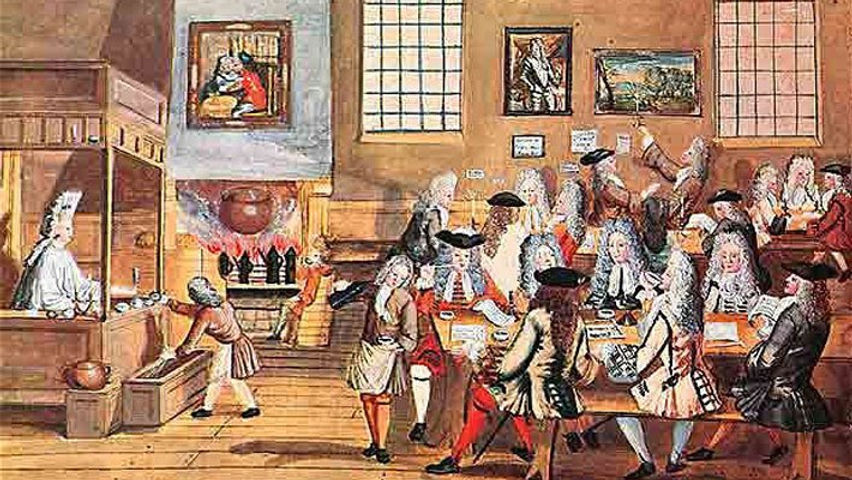
Missing your coffee fix of late? As we near an entire month of our lock-down, I’m sure many of us are sorely in need of a trip to see our favourite barista, and while we can’t provide you with coffee, we can provide you with the story of how coffee first came to Europe… If coffee isn’t your thing though please check out our first ever blog, which was about Hot Chocolate in the same period.
The first evidence that we have of humans drinking coffee comes from fifteenth-century Yemen, but it is said that the stimulating properties were first noticed by Islamic shepherds in the ninth century. The shepherds are said to have observed that when their sheep snacked on wild coffee beans they seemed to have more energy than before, and no doubt after quite a lot of experimentation, they experienced their first ever caffeine-hit for themselves. It eventually made its way to Europe apparently through the island of Malta where Turkish Muslim slaves taken by the Knights of St. John spread their traditional drink around the encampment during the Great Siege of Malta. From there it became popular among members of high Maltese society and soon made its way to Venice through trade with the North of Africa and the Middle East. Once it had reached Italy it spread like a wildfire through Europe and polite society was never the same.

An early London coffee house
Did you know that coffee was once ritually baptised? As was the case with most new luxuries found in far off lands, once coffee was ‘discovered’ by intrepid European explorers, it was brought to the Pope for approval. Pope Clement VIII was probably a little suspicious of the drink that his advisors demanded be banned but after one sip he declared: “This devil’s drink is delicious. We should cheat the devil by baptizing it”. The fear of this bitter little beverage sprang from the idea that it heightened energies and could no doubt be used as an aphrodisiac, spreading unchristian ideas and practices, but thankfully the Pope’s baptism seemed to take…
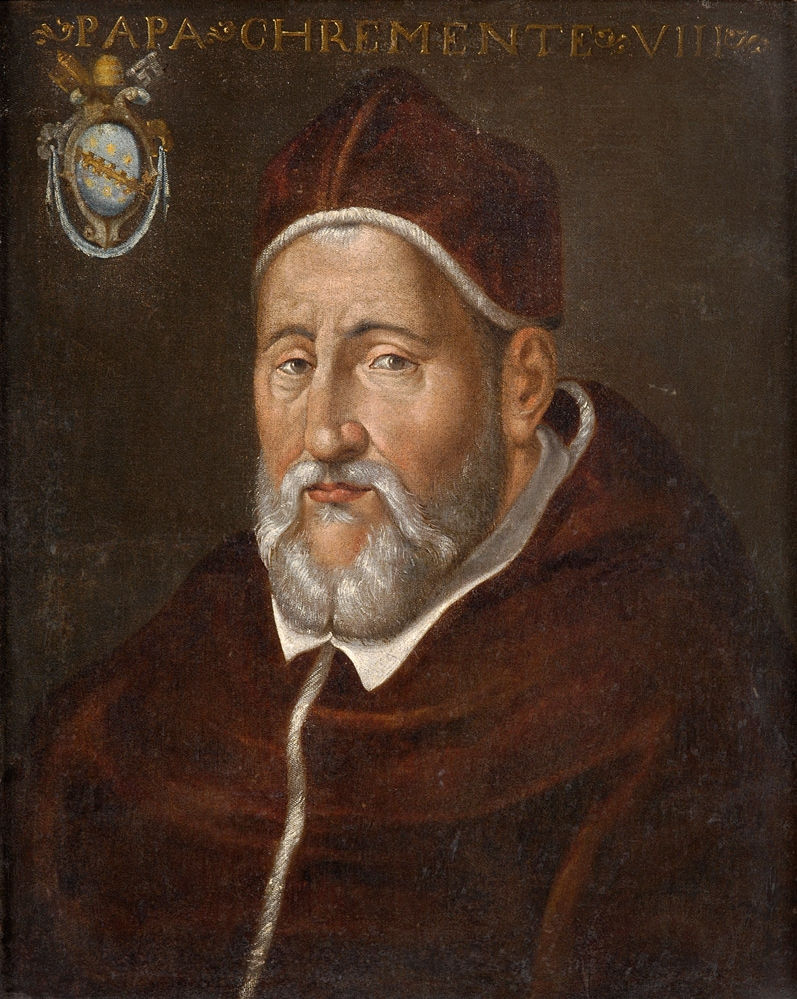
Pope Clement VIII
Once the drink was safely cleansed of sin and the people of Europe were successfully protected from it, coffee really started to take off across the continent – but the danger wasn’t over. By the mid-seventeenth century coffee houses had sprung up across all of the major cities and they fast became centres of intellectual debate about politics and religion. All of the great philosophers, writers and orators would gather to spread their ideas and discuss the finer points of society while sipping their coffee, and while it ushered in a new age of enlightenment, not everybody was pleased. By 1675 there were over 3000 coffee houses in England alone as as the general public spent more and more time discussing esoteric matters of governance and religion, the authorities – and the King – grew more and more frightened.
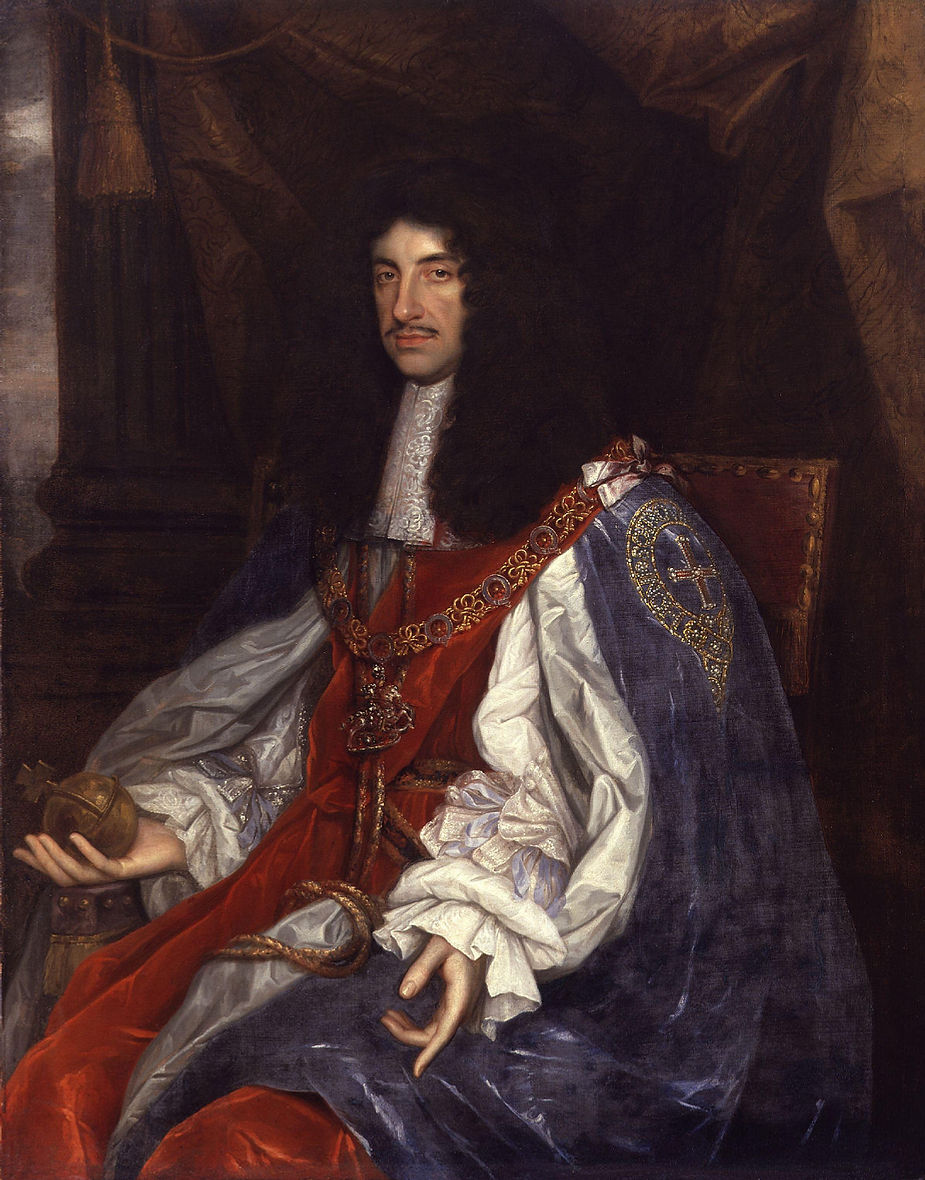
King Charles II
In 1675, the King of Great Britain and Ireland, Charles II, was feeling a little uneasy on his throne. He was the first King after the Glorious Revolution saw his father executed, and despite the relative peace of his rule, he was unable to produce a male heir. Knowing of the whispering that was going on in coffee houses across the kingdom he began to fear another uprising, and the figure at the centre of his worry was coffee, the stimulating drink adored by radical thinkers. Determined to prevent the ‘very evil and dangerous effects‘ of coffee, he issued a ban in 1675, citing the fact that:
‘[I]n such houses, and by occasion of the meetings of such persons therein, diverse False, Malitious and Scandalous Reports are devised and spread abroad, to the Defamation of His Majesties Government, and to the Disturbance of the Peace and Quiet of the Realm’
The law prevented both selling and consuming coffee, as well as gathering in coffee houses for debates and discussions (It wasn’t simply limited to coffee either, but also banned the selling of tea and sherbet). However the ban was short-lived (or rather, it never got off the ground at all). It was presented to parliament on December 29th, 1675 aiming for a January 10th enactment, but by January 8th 1676, urged on by his ministers (presumably struggling to come to terms with the idea of an decaffeinated future) the law was abolished and coffee houses never suffered so much as a blip.
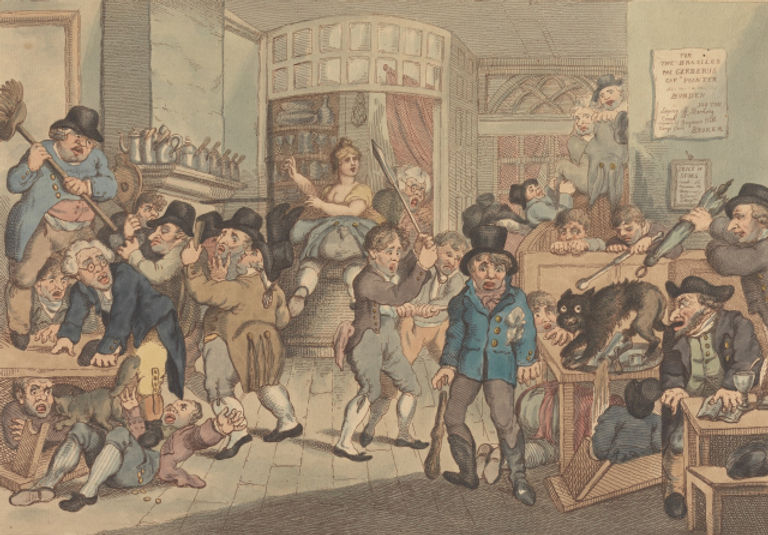
‘A Mad Dog in a Coffee House’ by Thomas Rowlandson, 1809
So what was coffee like during this period? The first coffee consumed in Europe was probably like the unfiltered Turkish coffee still enjoyed today, made using finely ground beans and water – it was a very strong drink, extremely bitter and probably not for the faint of heart! by 1800 though, recipes like the following from A New System of Domestic Cookery, were common:
Put two ounces of fresh ground coffee, of the best quality, into a coffee-pot, and pour eight coffee-cups of boiling water on it; let it boil six minutes, pour out a cupful two or three times, and return it again; then put two or three isinglass-chips (this is a type of gelatin obtained from the swim bladders of sturgeon) into it, and pour one large spoonful of boiling water on it; boil it five minutes more, and set the pot by the fire to keep it hot for ten minutes, and you will have coffee of a beautiful clearness.Fine cream should always be served with coffee, and either pounded sugar-candy, or fine Lisbon sugar. If for foreigners, or those who like it extremely strong, make only eight dishes from three ounces. If not fresh roasted, lay it before a fire until perfectly hot and dry; or you may put the smallest bit of fresh butter into a preserving pan of a small size, and, when hot, throw the coffee in it, and toss it about until it be freshened, letting it be cold before ground.

‘The Coffee Bearer’ by John Frederick Lewis
As we saw with chocolate houses last year, coffee houses laid the foundations for the first gentleman’s clubs and were used not only as a place to drink coffee and hear the great minds of the day speak, but also became meeting places for social groups, with several of the most famous clubs and societies of the day founded over a cup of steaming Turkish coffee. Coffee houses were not limited to England, there were plenty here in Ireland too. The earliest known reference to a coffee house in Dublin comes from a token for the business issued by its owner, Lionell Newman. Newman opened his premises sometime around 1664 and the origins of the beverage are acknowledged with the face of Sultan Morat of Turkey stamped on the reverse.
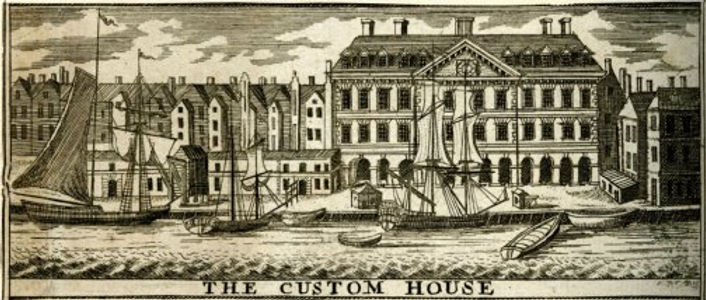
They were an extremely modern feature of seventeenth and eighteenth century Dublin, and were places for the most important, wealthy and fashionable people to gather. In Dublin, most of the coffee houses were concentrated between the parliament houses and the Custom House. As a result of this, the coffee house was probably the best way to get up to date news in Dublin during this period, with sailors, merchants and politicians in the know all congregating and swapping their stories. Aside from this, most coffee houses had a good relationship with printers and always had a supply of the latest newspapers and pamphlets for their patrons to enjoy. One Dublin coffee house owner who was particularly clever in this regard was Richard Pue, proprieter of Dick’s Coffee House, the most famous of the lot. Aside from his ownership of Dick’s, Pue was himself a printer and seller of newspapers and could stock his own pamphlets for his patrons at no extra cost, while also gaining a new audience to sell his stock!

Due to the nature of the time, they were mainly places for men to gather, to meet and to debate – it would have been unusual for a group of women to frequent the coffee house (women at this time were more interested in tea-drinking anyway, but we’ll get to that in another blog). Women did drink coffee, though generally at home, and even engaged with it by telling fortunes in the coffee grounds that collected in the end of their cups! However, that is not to say that women were excluded completely, and in some cases in Dublin women were known to run their own coffee houses. The most famous of these, and a lady immortalised in contemporary poetry was Mrs. Carterwright, the wife of George Carterwright, who ran the Custom House Coffee House for a time.
Her coffee’s fresh and fresh her tea,
Sweet her cream, ptizan, and whea,
her drams, of ev’ry sort, we find
both good and pleasant, in their kind.
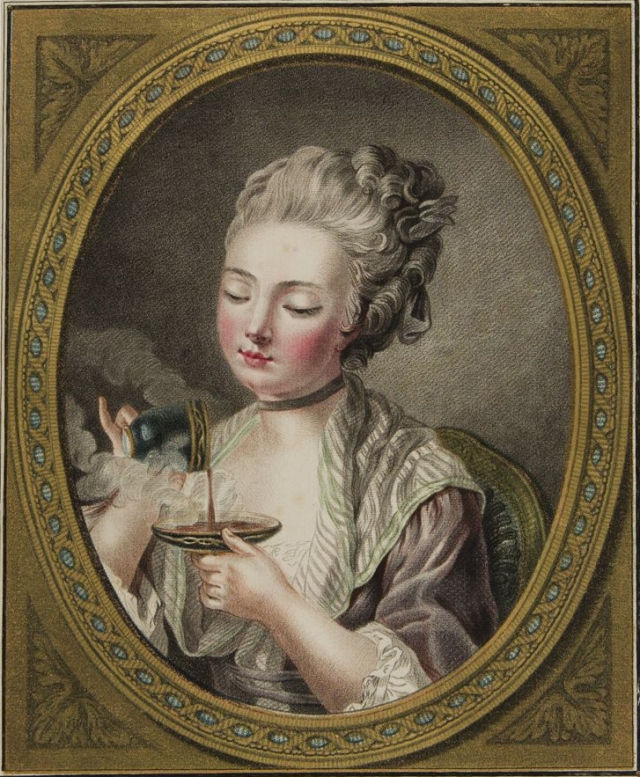
‘The Woman Taking Coffee’ by Louis Marin Bonnet, 1774
Here in Waterford there were at least two known coffee houses (and probably many more that will crop up eventually). Most of us are familiar with Coffee House Lane, a place named rather obviously for the most well-known business that operated there. It was here that John Aikenhead sold freshly brewed coffee brought into the port at least from 1690. Later, Nixon’s Coffee House operated on the Quay, and true to form as a centre of intellectual pursuits, Nixon’s is listed in the eighteenth century as one of the places you could go to read the latest copy of the Freeman’s Journal. Today, the tradition of freshly roasted coffee in the city is carried on by Coffee House Lane, a local brand who sell a ‘1690 blend’ to honour the legacy of these local coffee houses.
So there you have it, and while we might not be able to nip out to our favourite coffee houses at the moment, at least we can tide ourselves over with an authentic Georgian recipe for coffee: don’t forget the butter and isinglass…


